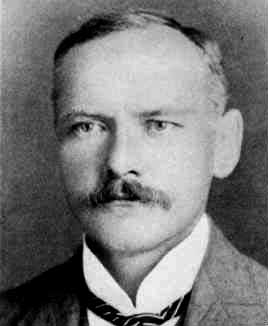

تاريخ الرياضيات

الاعداد و نظريتها

تاريخ التحليل

تار يخ الجبر

الهندسة و التبلوجي


الرياضيات في الحضارات المختلفة

العربية

اليونانية

البابلية

الصينية

المايا

المصرية

الهندية


الرياضيات المتقطعة

المنطق

اسس الرياضيات

فلسفة الرياضيات

مواضيع عامة في المنطق


الجبر

الجبر الخطي

الجبر المجرد

الجبر البولياني

مواضيع عامة في الجبر

الضبابية

نظرية المجموعات

نظرية الزمر

نظرية الحلقات والحقول

نظرية الاعداد

نظرية الفئات

حساب المتجهات

المتتاليات-المتسلسلات

المصفوفات و نظريتها

المثلثات


الهندسة

الهندسة المستوية

الهندسة غير المستوية

مواضيع عامة في الهندسة

التفاضل و التكامل


المعادلات التفاضلية و التكاملية

معادلات تفاضلية

معادلات تكاملية

مواضيع عامة في المعادلات


التحليل

التحليل العددي

التحليل العقدي

التحليل الدالي

مواضيع عامة في التحليل

التحليل الحقيقي

التبلوجيا

نظرية الالعاب

الاحتمالات و الاحصاء

نظرية التحكم

بحوث العمليات

نظرية الكم

الشفرات

الرياضيات التطبيقية

نظريات ومبرهنات


علماء الرياضيات

500AD

500-1499

1000to1499

1500to1599

1600to1649

1650to1699

1700to1749

1750to1779

1780to1799

1800to1819

1820to1829

1830to1839

1840to1849

1850to1859

1860to1864

1865to1869

1870to1874

1875to1879

1880to1884

1885to1889

1890to1894

1895to1899

1900to1904

1905to1909

1910to1914

1915to1919

1920to1924

1925to1929

1930to1939

1940to the present

علماء الرياضيات

الرياضيات في العلوم الاخرى

بحوث و اطاريح جامعية

هل تعلم

طرائق التدريس

الرياضيات العامة

نظرية البيان
Ernest William Brown
المؤلف:
R C Archibald
المصدر:
A semicentennial history of the American Mathematical Society 1888-1938
الجزء والصفحة:
...
2-4-2017
259
Died: 23 July 1938 in New Haven, Connecticut, USA

Ernest Brown's parents were Emma Martin and William Brown. William worked as a farmer for some years before changing jobs and becoming a lumber merchant. Ernest was the second of his parents' children, having one older sister. He was educated at a school in Trotteridge, Herefordshire, following which he attended Hull and East Riding College in Hull.
He showed great promise at this College and, in 1884, he entered Christ's College, Cambridge. Brown received his B.A. in 1887 when he was ranked Sixth Wrangler in the Mathematical Tripos (meaning he was the sixth best student with First Class honours in mathematics). He was awarded an M.A. from the University of Cambridge in 1891. In that year he left England for the United States. Before this, in 1889, he had joined the Royal Astronomical Society and in the year he left England his first paper was published by that Society on lunar theory.
Brown was appointed as an instructor in mathematics at Haverford College, Pennsylvania in 1891 then, in 1893, he was promoted to full Professor of Applied Mathematics. In 1907 he was appointed Professor of Mathematics at Yale University, a post he held until he retired in 1932. However his summers were almost all spent back in England at the University of Cambridge.
While he had worked in Cambridge, before going to the United States, Brown had read Hill's Researches in the lunar theory (1878) and published his own ideas on that theory. Newcomb was constructing tables of planetary motion when Brown arrived in the United States and Newcomb had persuaded Hill to help him out by working on the motion of Jupiter and Saturn. As this meant that Hill was no longer working on the motion of the Moon, Brown thought that the field was open and so began work himself in that area.
He published An Introductory Treatise on the Lunar Theory in 1896, then embarked on a new theory of the orbit of the Moon based on Hill's ideas. His great work appeared in five parts in the Memoirs of the Royal Astronomical Society between 1897 and 1908.
After 30 years of work, Brown published his lunar tables Tables of the Motion of the Moon in 1919. However the Moon stubbornly refused to follow the path that mathematicians computed for it and, despite attempts to take all reasonable effects into account, there were still fluctuations in the motion not predicted by theory [2]:-
Brown proposed an attack from the observational side and proposed utilising the observation of occultations of stars to a larger extent than hitherto to map the moon's path and improve the theory.
In 1926 Brown published a paper in which he ascribed these fluctuation to irregular changes in the Earth's period of rotation which has subsequently proved correct.
Not only did Brown contribute greatly to the theory of the Moon's orbit but he also worked on planetary motion. His book on this topic, Planetary Theory, written jointly with C A Shook, appeared in 1933.
Brown received many awards for his work. He was elected a Fellow of the Royal Society at the early age of 31. He received the Gold Medal of the Royal Astronomical Society in 1907 for his Researches in the lunar theory, and the Royal Medal of the Royal Society in 1914. He received the Watson Medal of the National Academy of Sciences in 1937.
He was also an active member of the American Mathematical Society, serving as its president from 1914 to 1916. His life style, perhaps the consequence of his interest in astronomy, is described in [8] as follows:-
He was in the habit of going to bed early and as a consequence woke up between three and five o'clock in the morning. After having fortified himself with strong coffee from a thermos bottle he set to work without leaving his bed, smoking numerous cigarettes. His serious scientific work was thus done before he got up for breakfast at nine o'clock.
In [2] he is described as follows:-
Of elegant presence and of unassuming friendly character, he was a welcome guest to British astronomers on his occasional visits to his native country.
Books:
Articles: